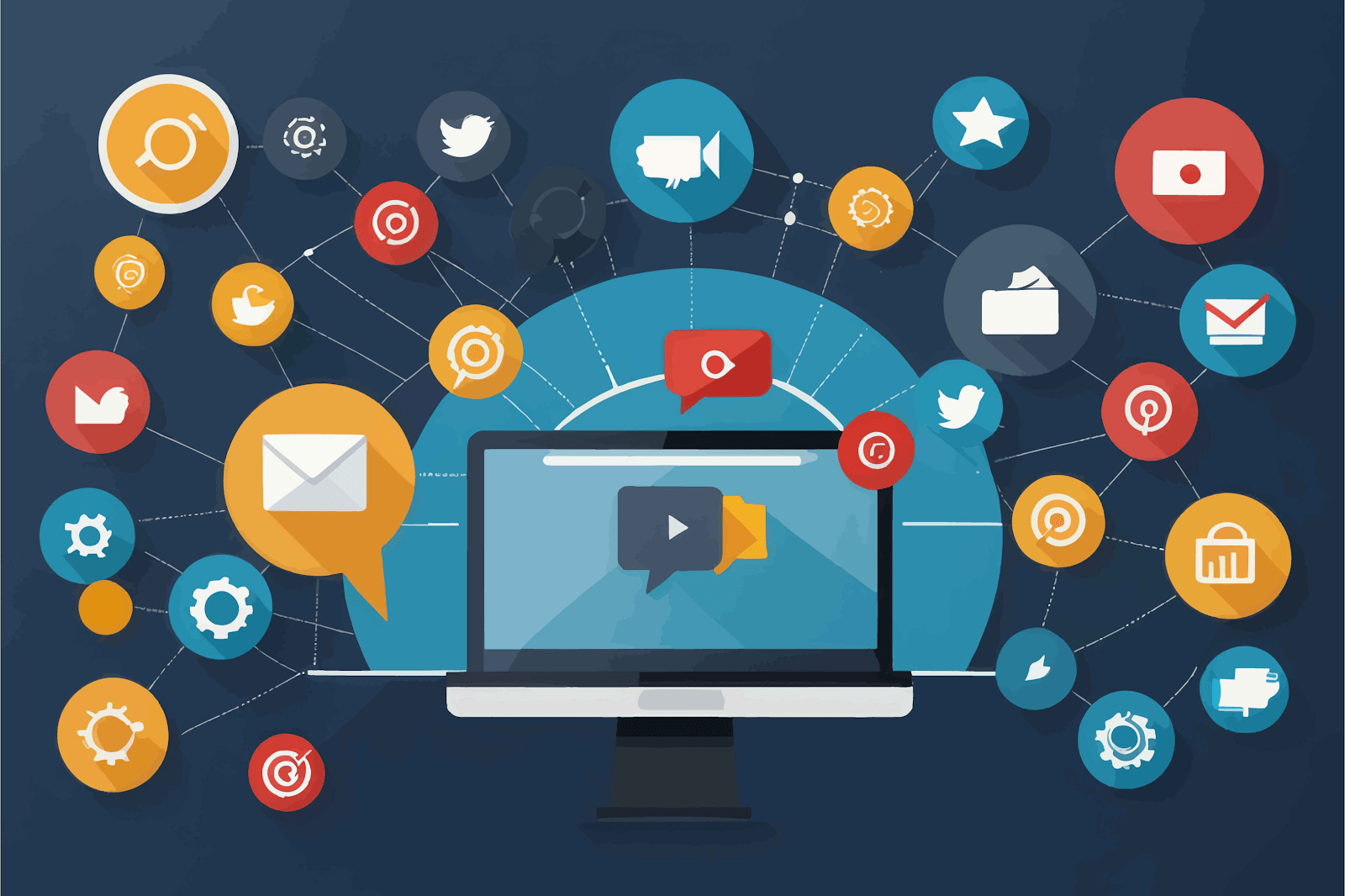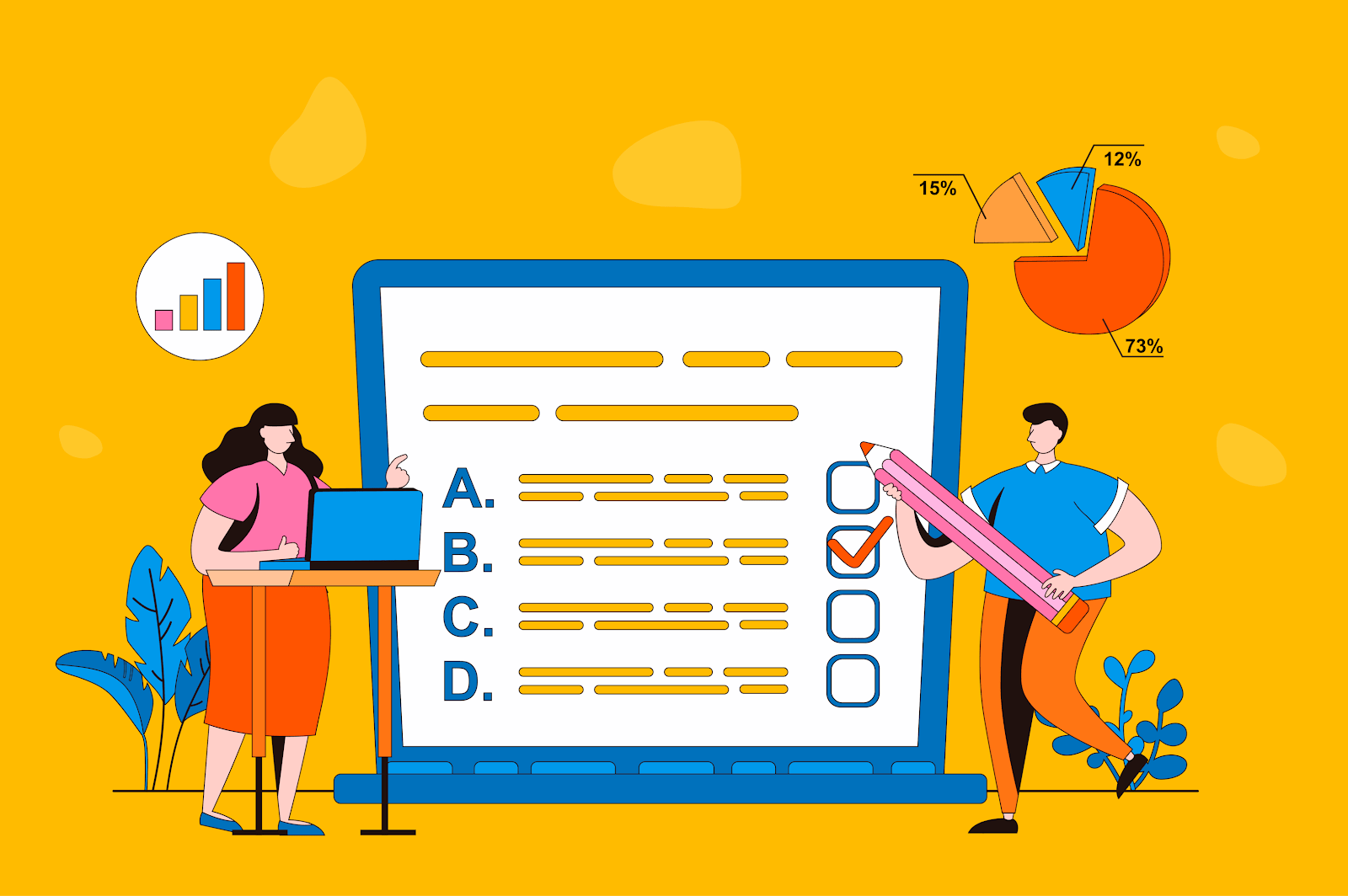So you've built a product that solves a specific problem of your target audience. And in your humble opinion, it's...

How to Make the Best “How Did You Hear About Us” Survey
It’s one thing to know which of your marketing campaigns are most effective. It’s another to know in which platforms do these marketing campaigns perform the best.
Asking, “How did you hear about us?” can tell you where the bulk of your customers are coming from. This can help you strengthen the marketing channels that work best and eliminate the ones that underperform.
In this guide, we’ll go over the advantages of a “How did you hear about us?” survey, where to put it, and how to create one that will help improve customer acquisition.
What’s the Point of a “How Did You Hear About Us” Survey?
As a customer, you probably answer a “How did you hear about us?” survey every once in a while. All kinds of businesses do it, and it’s a relatively easy method of collecting valuable marketing data.
Most businesses ask this question to new customers.
For example, you buy a product from a company you’ve never engaged with before. They ask “How did you hear about us?” and it’s relatively easy for you, as the customer, to recall where you first heard of or seen the company. Perhaps it’s social media, a Google search, or maybe even word-of-mouth referrals. You pick the best option and move along your day.
But what does the business do with your response? Here are three main goals of a “How did you hear about us?” survey:
Understanding Your Marketing Channels Better
From a business perspective, asking “How did you hear about us?” tells you exactly where your customers are coming from. Sure, it can be easy to measure how many customers discover your platform via digital channels, but customers may discover your business through a different platform before they start engaging.
For example, you may have engaged with a business through their company website, but you first heard about them on Instagram.
A “How did you hear about us?” survey can give you a clear snapshot of which channels are pulling their weight and which might need a rethink. This simple question revolves around gathering insights directly from your customers about how they stumbled upon your business, whether it’s through a specific online ad, a social media post, or a friend’s recommendation.
It can also help you measure the effectiveness of non-digital marketing platforms, such as flyers, events, local advertising campaigns, magazine ads, and more.
When you start to see patterns in how customers are finding you, you can better allocate your resources to strengthen the high-performing channels and either improve or phase out the underperforming ones.
Maximizing Customer Engagement
When you know the routes people are taking to find your brand, you can tailor your messages and campaigns to suit their tastes better. For instance, if you notice a lot of your audience is clicking through from Instagram, you might decide to ramp up your posts and stories there to use that platform’s specific features to connect.
Using this survey info helps you tweak your marketing efforts to not just catch people’s eyes, but to keep them genuinely interested. You can also smooth out any bumps in how people find and interact with you. Say many of your customers mention they found you through a friend. Maybe it’s time to think about a referral program that makes sharing your brand more appealing.
Including this question shows you’re listening and that you care about their experience, which can make customers more likely to stick around and interact more with your brand. It makes your engagements with them feel more thoughtful and targeted, which can improve the customer experience and build a deeper connection.
When to Ask “How Did You Hear About Us?”
Figuring out the best time to ask “How did you hear about us?” can help you gather useful information without annoying your customers too much. Here are a few clever spots to slip in that question without making it awkward:
- At the checkout
Whether someone’s wrapping up a shopping spree in your store or clicking through the last steps of an online purchase, asking right then is convenient. They’re already in the right headspace, so it’s a seamless addition to the process.
- During the signup process
If your business has a setup where customers need to register an account, tacking on this question feels like a no-brainer. It’s a moment when customers are likely already entering details about themselves, so one more field won’t feel like a big ask.
- In follow-up emails
After someone buys something, why not drop the question in a follow-up email or a feedback survey? It’s a great way to ask without putting them on the spot, and it shows you’re interested in their input.
- While they’re on the phone
If a customer calls you up with a question or an issue, and after you’ve sorted everything out, it’s a good moment to ask how they first heard about you. It makes the call feel more like a conversation and less like just a problem-solving session.
“How Did You Hear About Us?” Answer Options
When you’re putting together a “How Did You Hear About Us?” survey, having clear and broad answer choices is key to getting good data. Here’s a straightforward way to list out the sample answers that should cover most of the ways customers might stumble upon your business:
Online Channels:
- Social media (with options for Facebook, Instagram, Twitter, YouTube, etc.)
- Search engine (like Google or Bing)
- Email newsletter
- Online ads (specifying platforms like Google Ads, Facebook Ads, etc.)
- Blogs or articles
- Affiliate links
- Customer review sites
Offline Channels:
- Word of mouth
- In-person events or trade shows
- Print media (such as magazines, newspapers)
- TV or radio advertisements
- Direct mail
Other Options:
- Referral by friend or family
- Partner referral (if you have partnerships with other businesses)
- Previously a customer (for returning customers)
It’s also a smart move to include an “Other” option with a space for customers to write in an answer if their source isn’t listed. Doing so helps make sure you capture all possible avenues and alert you to new or niche channels you might not be actively tracking.
Other Ways to Ask “How Did You Hear About Us?”
Mixing up how you ask “How did you hear about us?” can keep things fresh and might even boost the number of responses you get. Here are some alternative ways to phrase the question that might resonate differently with your audience:
What brought you to us today? – This version feels a bit more immediate and personal, making it great for in-person interactions or during a customer service call.
Can you remember what led you to our website? – Perfect for online surveys, this question gently nudges customers to think about their journey to your site.
Which of our ads caught your eye? – This directs the customer’s attention to your advertising efforts and can help you gauge the effectiveness of your current ads.
Did someone recommend us to you? – This is a direct way to track word-of-mouth, which can be incredibly valuable.
Where did you first learn about us? – This broader question can help customers recall their first encounter with your brand, whether it was online, in-store, or through media.
What led you to sign up for this event? – This question helps you understand the direct motivations behind a person’s decision to attend.
How did you find out about this job opening? – This is straightforward and gathers precise data on what channels are effective for recruiting.
How to Make a “How Did You Hear About Us?” Survey
A “How did you hear about us?” survey should be easy to answer for customers yet designed to give you clear, actionable insights. Here’s how to put together a survey that does just that:
1. Define Your Goals
Before diving in, pinpoint exactly what you want to learn from this survey. Are you trying to assess the effectiveness of a new marketing campaign? Or are you more interested in general trends in how customers discover your business?
Having clear goals will help you design the survey to get the answers you need.
2. Choose the Right Tool
There are plenty of survey tools out there like FullSession, Google Forms, SurveyMonkey, or Typeform that offer various features depending on your needs.
Pick one that’s easy to use, both for you and the respondent, and fits your budget.
3. Design Your Questions
Start with the main question. This could be as simple as, “How did you hear about us?” or any of its variations.
Provide specific answer options. List common channels like social media, search engines, word-of-mouth, etc. Include an “Other” option to capture data you might not have considered.
Keep it short and simple. The shorter your survey, the more likely people are to complete it. Stick to a few key questions unless more detailed feedback is crucial for your goals.
4. Integrate the Survey Smoothly
Decide when and where to ask this question. It could be during the checkout process, at the end of a customer service call, or as part of a follow-up email.
Make sure it doesn’t disrupt the customer experience but is easy to access and fill out.
5. Test and Tweak
Before going live, test your survey internally or with a small group of customers to ensure it works as intended. Check if the questions are clear and the form is easy to use.
Use feedback to tweak and improve the survey before rolling it out broadly.
6. Analyze and Act on the Data
Collecting the data is only half the battle. Analyze the responses to see clear patterns and trends.
Use this information to make informed decisions about where to invest in your marketing efforts.
What to Do With Your Survey Data
Once you know how customers discovered your business, it’s time to put your data to work. Here’s how to make the most out of the data you collect:
Adjust Marketing Strategies
Use the insights from your survey to refine your marketing strategies. If you find that a significant number of customers are coming from social media, for instance, you might decide to allocate more of your budget there.
On the flip side, if traditional advertising channels like print or radio are not performing well, you might scale back on these areas to concentrate on more effective methods.
Improve Customer Targeting
Knowing where your customers come from lets you hit the bullseye better.
For example, if you’ve got a bunch of customers coming in from a specific type of blog, beefing up your presence in that space could attract even more people who are into the same content strategy.
Smoothen the Customer Experience
The survey data can reveal insights into the customer journey, which can allow you to modify the experience for the better.
For instance, if many customers mention that they found your website through search engines, you should make sure that your SEO is strong and your website is easy to navigate.
Forecast Trends
Long-term data from these surveys can help you forecast trends and prepare for future changes in consumer behavior.
For example, a gradual shift from finding your business through traditional media to digital platforms could signal a need to shift your marketing focus and resources.
Share Data Across Departments
Make sure the insights from your survey aren’t just siloed within the marketing team.
Share this data across departments—from sales to customer service—to make sure everyone understands customer behaviors and can align their each marketing strategy accordingly.
Collect Customer Feedback the Easy Way With FullSession
“How did you hear about us?” surveys can help you upgrade your current marketing campaigns and prepare for future strategies to maximize customer satisfaction and acquisition.
One of the best places to ask this question is when your target audience is already engaging with your brand on your website.
FullSession gives you access to user-friendly customer feedback tools that will let you create almost any form you can think of. Ask your customers where they found your brand, and FullSession will collect and analyze the data for you.
FullSession Pricing Plans
The FullSession platform offers a 14-day free trial. It provides two paid plans—Basic and Business. Here are more details on each plan.
- The Basic plan costs $39/month and allows you to monitor up to 5,000 monthly sessions.
- The Business plan costs $149/month and helps you to track and analyze up to 25,000 monthly sessions.
- The Enterprise plan starts from 100,000 monthly sessions and has custom pricing.
If you need more information, you can get a demo.
Install Your First Survey Form Right Now
It takes less than 5 minutes to set up your first website or app feedback form, with FullSession, and it’s completely free!
FAQs About “How Did You Hear About Us” Surveys
How often should I run a “How did you hear about us?” survey?
Stick with it regularly. Keep this question rolling during key customer interactions to keep your data fresh and relevant. It helps you stay tuned into how your marketing efforts are panning out over time.
Can this question annoy customers?
Not really, as long as you’re not pushy about it. Most people understand it’s just part of doing business and is usually okay with answering if it might improve their experience.
Do these surveys work for regular stores, too, or just online shops?
They’re great for any business, online or on the main street! Knowing where your customers come from can help you make smarter decisions, not just about marketing but also about how you set up your shop and what you put where.





